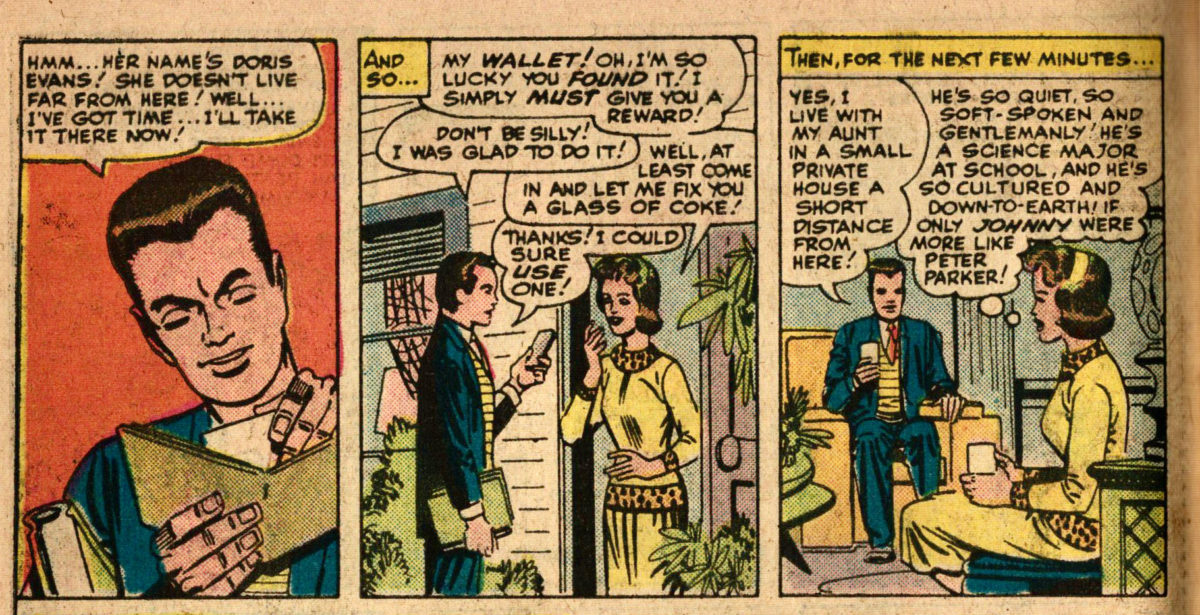Featuring: Captain America
Release: January 12, 1965
Cover: April 1965
12 cents
Writer: Stan Lee
Illustrator: Jack Kirby
Delineator: Frank Ray
Letterer: S. Rosen
10 pages
| Previous | #317 | Next |
|---|---|---|
| Prelude | Captain America Comics #1, Story C | |
| Tales of Suspense #64 | Reading order | Strange Tales #131 |
| Tales of Suspense #64 | Tales of Suspense | Tales of Suspense #65 |

This is an extremely close retelling of the second story from Captain America Comics #1, which we covered back when Captain America first returned in Avengers #4.
The original story is most notable for being Captain America’s first case and for introducing Betty Ross.
I see I didn’t go into great detail on the plot in that post, writing this:
The story of the comic doesn’t make any sense whatsoever. I can’t begin to try to explain it and I’m not sure it’s worth considering all the many ways in which it makes no sense. Suffice it to say they stop the bad guys.
We’ll delve deeper here.
Last issue was a close retelling of the first story from Captain America Comics #1, which was the story of Captain America’s origin. Next issue will be a retelling of Captain America’s first battle against Red Skull from the same issue. It makes sense why one might want to revisit those two stories. And then there’s this one.
The original stories are by Joe Simon and Jack Kirby. Joe Simon’s name should probably have been in the credits of this comic, as it’s based so closely on his original story. The plot owes more to Simon than many of the comics Stan Lee claims “plot” credit on owe to Stan.
My issue with the original is that I didn’t really understand what Sando and Omar brought to the scheme. There were Nazi saboteurs in America successfully blowing things up. Why have a member of your crew go onstage and warn people about the attacks in advance by pretending to be psychic? The comic didn’t really try to explain.
Let’s compare the new one to the original. The first thing we will notice is the new one fits into very regular grid patterns that make it easy to crop out groups of panels. The original felt bound by no such structure, so the croppings will all be imperfect.
Looking to the opening splash pages, the crystal ball image is very close. The changes fit Kirby’s more dramatized style and generally make a more modern splash page. Omar is a little less freakish in the new one. The biggest loss is Sando, whose fingers had an unusual positioning in the original, almost suggesting his role as puppeteer. Kirby opted for a more standard-for-Kirby dramatized positioning.
The modern comic claims to be “introducing” Sando and Omar. This seems blatantly false, as they were obviously introduced 25 years earlier.
Continue reading “Tales of Suspense #64, Story B”































